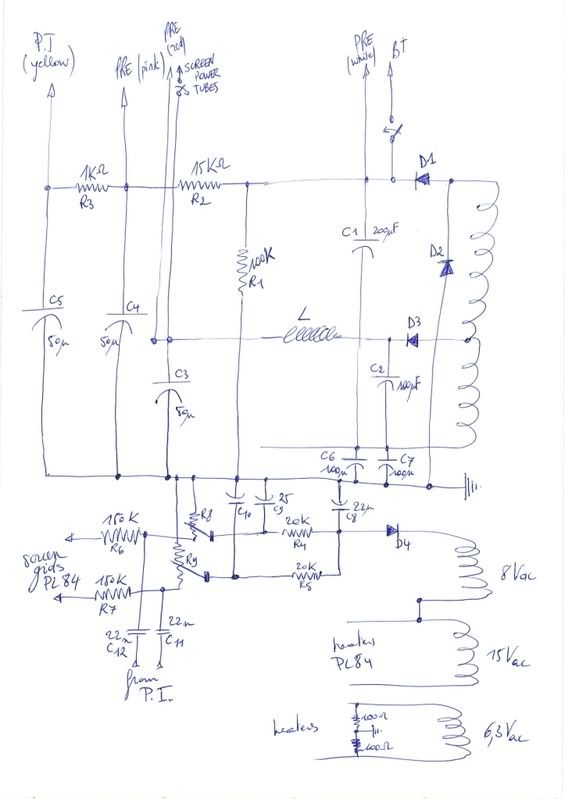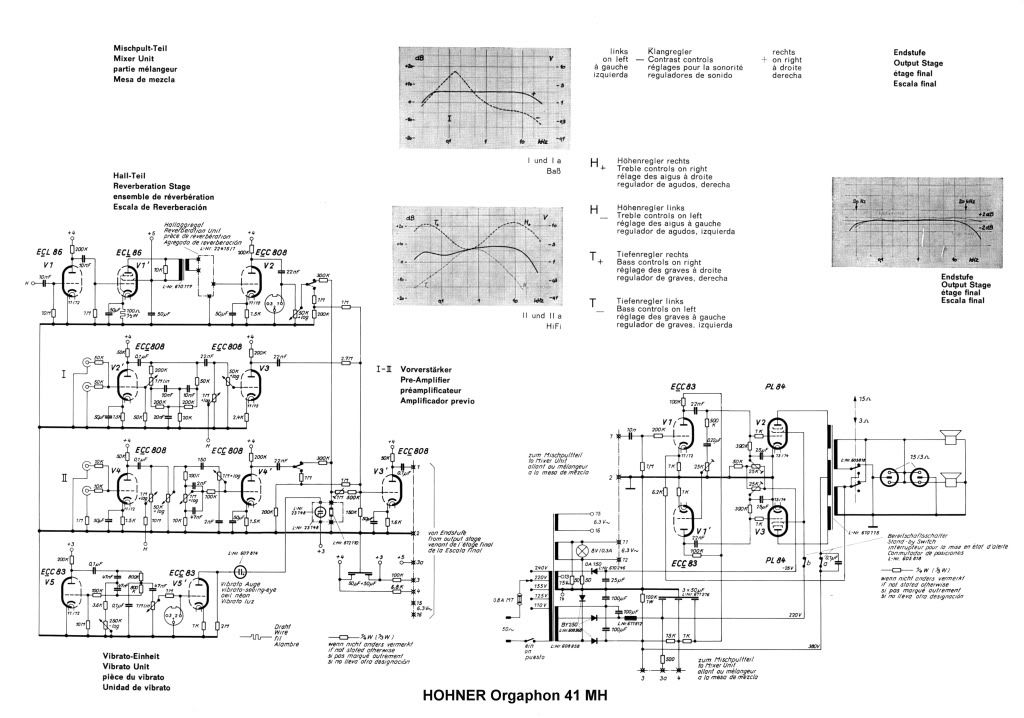Thanks PRR,
the c11, c12 remark is correct. I mistraced that.
and thanks for pointing out the control/screen grid mistake.
The real question is actually:
It was never really broken but sounded wrong when overdriven.
This circuit is what's in there at the moment,
after I went in and tried to improve it. :

First I replaced the old diodes and the old supply caps.
I scoped it and saw that when overdriven the waveform had nasty spikes.
I narrowed that down to the PI or poweramp.
For a while I believed that the PI was the culprit, I put in a totally new PI, a cathodyne instead of the paraphase.
Why, because I thought the balancing of the paraphase was the problem.
The problem was still there.
When I measured the signal with the power amp out of circuit the PI was giving out a good signal.
With the power amp it's totally wrong, especially with the feedback loop in place
So from then on I was suspecting the power supply is wrong.
It is very likely that I misconnected something right back when I started to replace things in this amp.
As far as I can rely on my scoping skills the voltage on the screen grids is acting weird.
And what I think I understand from the drawn circuit above is the c1, c6, c7, d1, d2 - part.
That looks to me like a voltage doubler from the textbook.
D3 I cannot grasp and is feeding the screen grids, so my question is actually, could it be misconnected.
And how to do it right ?
This is how Hohner did it in an other amp from the same series,
there's not much difference in the PI and PA.





































